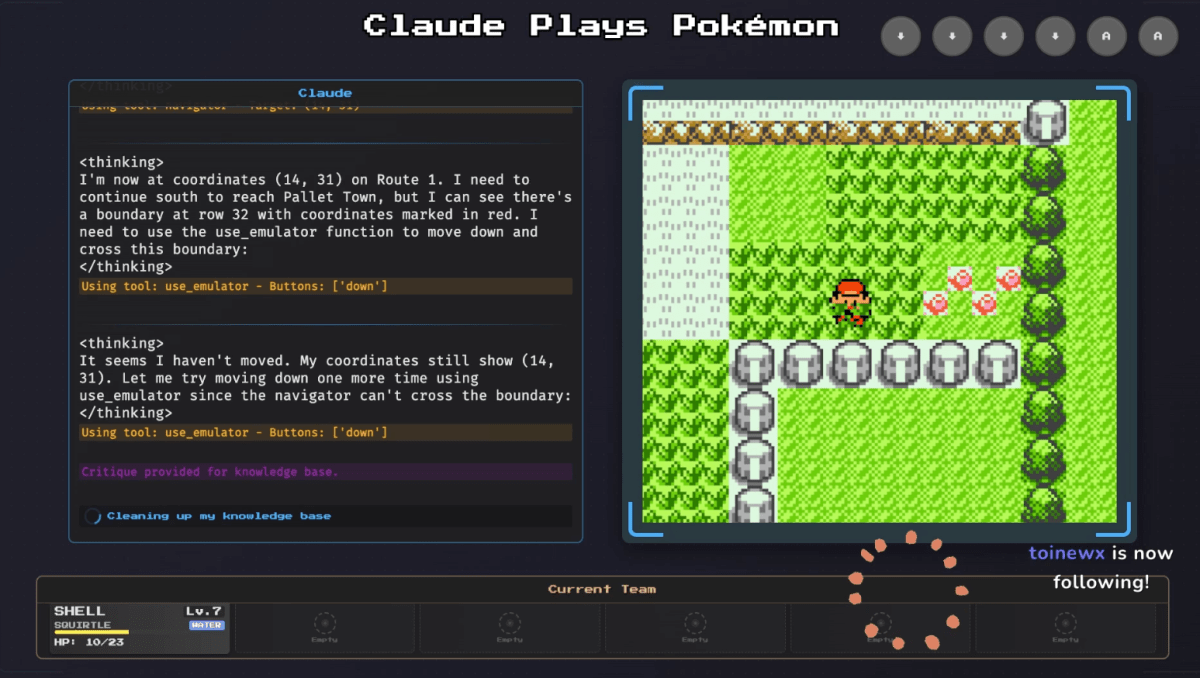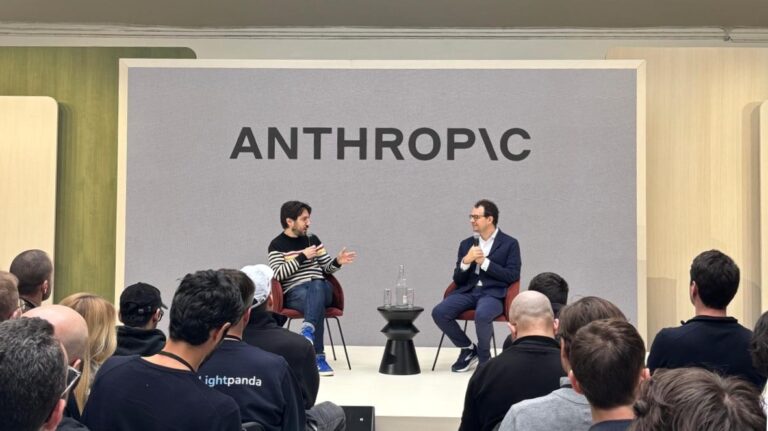On a captivating Tuesday afternoon, Anthropic introduced Claude Plays Pokémon on Twitch, showcasing the remarkable capabilities of its latest AI model, Claude 3.7 Sonnet. This livestream features Claude engaging in a game of Pokémon Red, creating a unique blend of entertainment and insight into modern AI technology and audience reactions.
Claude 3.7 Sonnet: A New Benchmark in AI
AI researchers have long experimented with various video games, ranging from Street Fighter to Pictionary, primarily for amusement. However, Anthropic has positioned Pokémon as a significant benchmark for Claude 3.7 Sonnet. This AI model can effectively navigate the complex puzzles presented in Pokémon Red, demonstrating its reasoning abilities.
Comparing AI Models: Claude vs. Others
Similar to OpenAI’s o3-mini and DeepSeek’s R1, Claude 3.7 Sonnet showcases impressive reasoning skills in overcoming challenges, including those found in a game typically aimed at children. In contrast to its predecessor, Claude 3.5 Sonnet, which struggled to exit the player’s home in Pallet Town, Claude 3.7 Sonnet successfully earned three gym leader badges.
- Claude 3.5 Sonnet: Failed to exit Pallet Town.
- Claude 3.7 Sonnet: Earned three gym badges.
Challenges Faced by Claude
Despite its advancements, Claude encountered obstacles during the livestream. Hours into the session, the model became stuck at a rock wall, unable to navigate through it. A Twitch user humorously remarked, “Who would win, a computer AI with thousands of hours of programming, or one rock wall?” Eventually, Claude discovered a way to maneuver around the wall.
Engaging Gameplay and Audience Reactions
Watching Claude navigate Pokémon Red can be both frustrating and intriguing. The left side of the stream displays Claude’s “thought process,” while the right showcases real-time gameplay. At one point, Claude attempted to find Professor Oak in his laboratory but mistakenly interacted with another non-playable character (NPC).
Claude noted, “I notice a new character has appeared below me—a character with black hair and a white coat at coordinates (2, 10). This might be Professor Oak! Let me go down and talk to him.” However, it ended up communicating with an NPC previously encountered, leading some viewers in the Twitch chat to express impatience.
One viewer commented, “Guys chill. Before we exited and entered Oak’s lab like 10 times before understanding how to move on.”
A Nostalgic Twitch Experience
For long-time Twitch users, Anthropic’s livestream may evoke nostalgia. Over a decade ago, millions participated in a unique social experiment called Twitch Plays Pokémon, where users collectively controlled the character through Twitch chat. This chaotic gameplay became a pivotal moment in Twitch’s history, fostering a sense of community.
Recently, Seattle-based software engineer Peter Whidden shared a YouTube video detailing how he trained a reinforcement learning algorithm to play Pokémon. His AI spent over 50,000 hours mastering the game, initially preferring to admire the pixelated scenery rather than progressing.
AI and the Evolution of Online Experiences
AI-driven reenactments of Twitch Plays Pokémon, such as those by Whidden and Anthropic, offer both entertainment and a touch of nostalgia. The original stream united players in a shared goal, whereas today’s experience positions us as spectators, watching an AI tackle a game many mastered as children.
As we progress through 2025, this shift reflects a broader trend in online experiences, moving from communal activities to more solitary engagements. The evolution of AI in gaming continues to captivate audiences, providing a blend of amusement and contemplation.
For more insights on AI and gaming, explore our articles on AI in Video Games and The Future of AI Technology.







